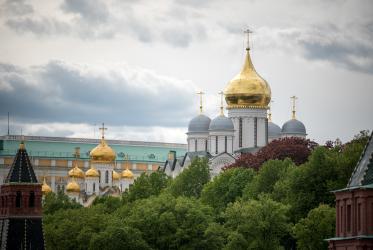By Susan Kim*
Dr Jurjen Zeilstra is a historian and theologian. His biography “Visser 't Hooft, 1900-1985 Living for the Unity of the Church” served as a dissertation in the humanities at the Amsterdam Free University in order to receive the degree of Ph.D. in 2018. Willem Visser 't Hooft led the World Council of Churches (WCC) during its formative stages. Below, Dr Zeilstra reflects on what it was like to study the life of Visser 't Hooft.
What inspired you the most as you worked on the biography?
Dr Zeilstra: The story of the life of Willem Visser 't Hooft (1900-1985) to me is a fascinating adventure covering the main part of the 20th century. Two world wars, the interbellum period of economic crisis, severe international tensions, and the rise of fascism, form the background to his ecumenical work among youth from many nations, students and those engaged in the organisation of the early years of World Council of Churches (est. 1948) and its predecessors. Visser 't Hooft loved a good challenge and he saw chances where others predominantly saw difficulties. He was engaged with almost all the great themes of the century, such as secularisation, decolonisation, refugees, Cold War, missions, racism, poverty, emancipation, European unity, peace and justice. During my work, I wanted to take the task seriously, not to build on what others had written about him before me, or rely on Visser 't Hooft's own memoirs. I wanted to explore the sources. Fortunately I found them in abundance, especially in the WCC archives in Geneva, but also at many other places. As a historian I enjoy very much being in direct contact with the written sources themselves. But also many oral sources were available. People who knew Dr Visser 't Hooft were very eager to tell me about their experiences. As a theologian, I am not always convinced by Visser 't Hooft's theological interpreting of world history, but I sincerely respect his bold application of theological insights to historical impasses. His resolute attitude often led to surprising efforts to give shape, forming relevance of churches in moments of crisis. Organising all this information in a book was quite a job. I hope to have been successful in creating a vivid picture of a remarkable man.
Do you think your work will inspire the coming generation of the ecumenical movement?
Dr Zeilstra: It is no secret that the ecumenical movement today in many parts of the world suffers from a loss of relevance in a period of decline of the church and strong secularisation. The impact of theologically sound convictions is weak, in a society predominantly oriented to material wellbeing and the fairy tales of successful lives of men and women that always seem strong and happy. Churches forced in the defensive often cling to restorative attitudes, instead of engaging in the reviving of humanising values. In Visser 't Hooft's mentality a highly respectable, if not always successful, intention is visible to think highly of the church as the living body of Christ in the world. Visser 't Hooft felt called never to despair and believe that in ever different circumstances God was building his kingdom of justice and peace, making use of people of all ages and backgrounds. In his view churches should not so much be worried about their own preoccupations, but not hesitate to give themselves in the ecumenical dialogue and service to build a better world. I am sure that his advice to young people today would be, not to be discouraged by secularisation, but concentrate on the meaning of faith in the context of today, let themselves be inspired by Christ and boldly see the church, as small and seemingly unimportant as it may be, as a means and a chance to do good.
What is a “little-known” fact about Dr Visser ’t Hooft that would surprise people?
Dr Zeilstra: Not everybody knows that Willem Visser 't Hooft could be quite a difficult person to deal with. The riddle of his life is that the same man, who could be so charismatic, original, diplomatic and persistent, could also be grumpy, stubborn, shy and struggling with himself. To me this makes his life even more intriguing. To those who knew him as the general secretary of the World Council of Churches (1948-1966), I can recommend reading the chapters on his youth work for the YMCA (Young Men's Christian Associations) and the WSCF (World Student Christian Federation). To those who only know him in his work for the ecumenical movement, I like to point at his work on the so called 'Swiss Road' (1942-1944), connecting resistance groups inside the occupied Netherlands with the Dutch government in exile in London. His many efforts to make both the Russian Orthodox Church and the Roman Catholic Church members of the World Council are well known, I think. In the first case he was successful, in the second he failed. Not so well known, I consider, that he spent the rest of his life time and again trying to bridge the gap between the World Council and the Roman Catholic Church. Much to his regret at old age, this never worked out as he had hoped for.
A primary rich source I discovered only in my last year of research, was the approximately 100 digitally remastered recordings of Visser 't Hooft at the Sound and Vision Institute in Hilversum, The Netherlands. Not to my knowledge did anyone else before me systematically go through these programmes and fragments of programmes. To me, who has never met Visser 't Hooft in the flesh, it was a tremendous informative discovery that, I remain sure, greatly enriched the book.
*Susan Kim is a freelance journalist based in the US






